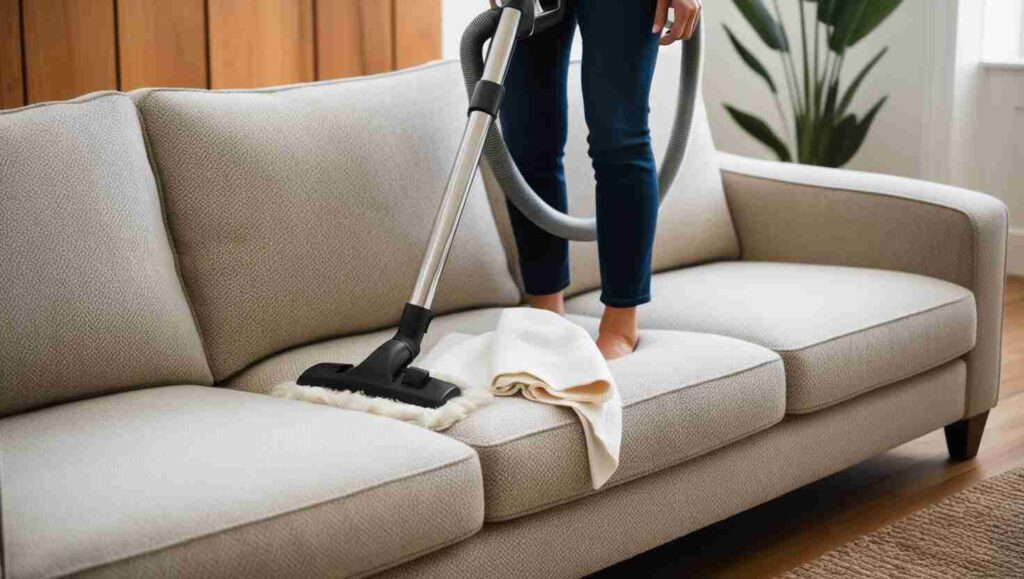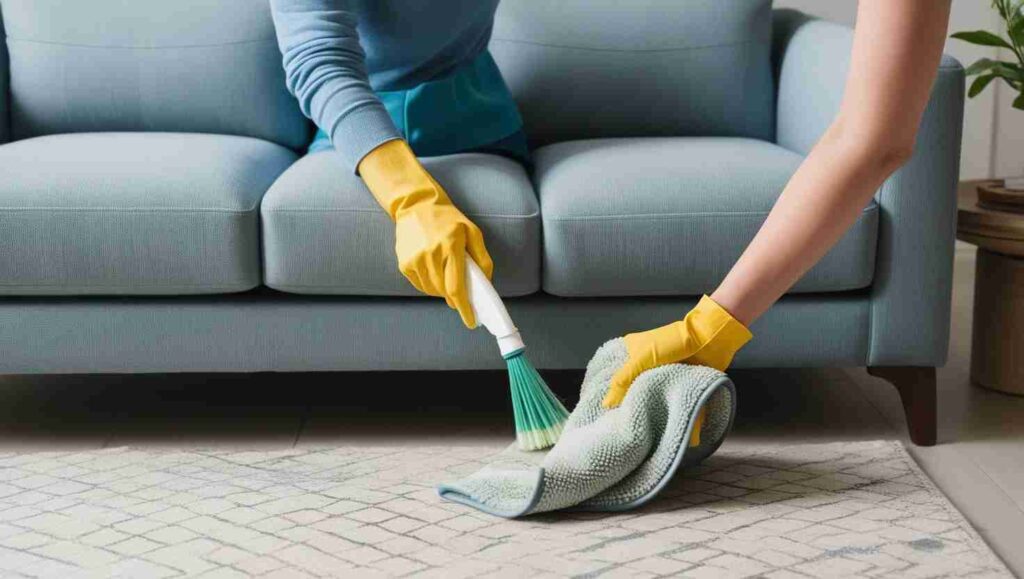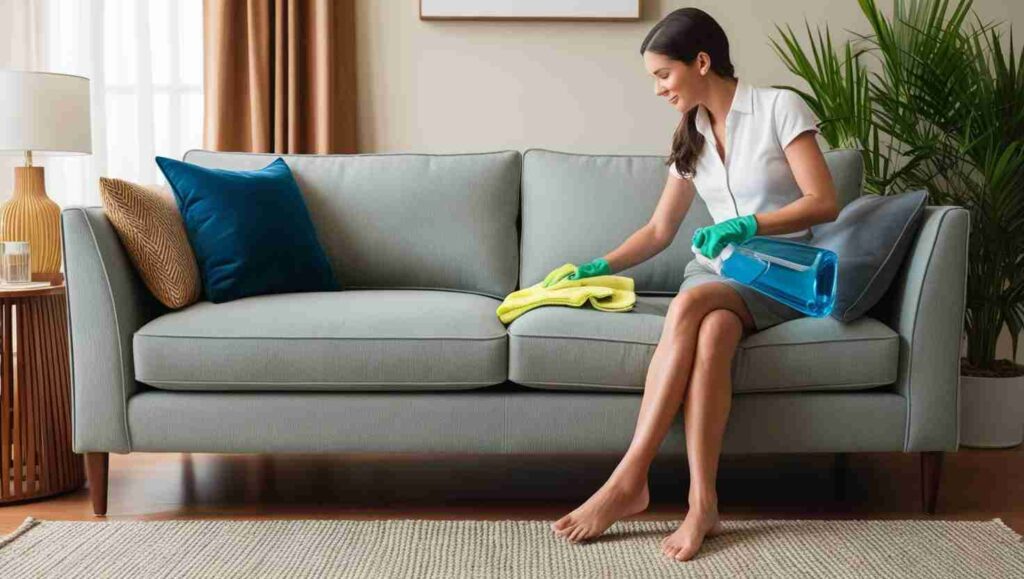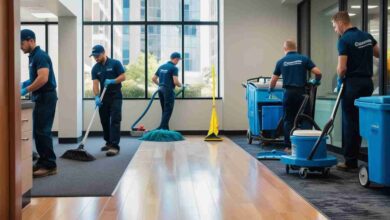
We’ll explore the 20 best couch cleaners that offer effective, reliable solutions for every type of fabric and finish. Discover the top-rated products that homeowners swear by to keep their couches spotless and smelling great, when it comes to maintaining a clean and inviting living space, having the right couch cleaners on hand is essential. Your couch is often the centerpiece of your home, a place where family and friends gather, making it a magnet for spills, stains, and everyday dirt. Finding the best couch cleaners can make all the difference in keeping your furniture looking fresh and extending its lifespan. Whether you’re dealing with stubborn stains, pet odors, or simply want to refresh your upholstery, there’s a wide range of options available to suit your needs. From powerful sprays to natural solutions, the right product can transform your cleaning routine. In this guide.
What is the best thing to clean a sofa with?
How do I clean my fabric sofa?
What do professionals use to clean couches?
How do I deep clean my couch?
What is the best DIY to clean couch?
How to clean and deodorize a couch?
Can fabric sofa be shampooed?
What is the absolute best odor eliminator?
What is the best thing to clean a sofa with?
1. Identify Your Sofa Material
Before choosing a cleaning product, it’s important to know the material of your sofa. Common sofa materials include fabric, leather, microfiber, and synthetic blends. Always check the manufacturer’s label for specific care instructions, as using the wrong cleaner can damage your sofa.
2. Best Cleaning Solutions for Fabric Sofas
For fabric sofas, a simple solution of mild dish soap and warm water works wonders for spot cleaning. Mix a few drops of dish soap in a bowl of warm water, dip a soft cloth into the mixture, and gently blot the stained area. Avoid rubbing, as this can damage the fabric fibers. For deeper cleaning, upholstery cleaners specifically designed for fabric sofas, such as Bissell Upholstery Cleaner, offer great results. These products are formulated to remove tough stains without causing damage.

3. Best Cleaning Solutions for Leather Sofas
Leather sofas require special care to prevent drying and cracking. Use a leather cleaner and conditioner to clean and moisturize the surface. A mixture of equal parts white vinegar and water can also be used for gentle cleaning. Apply the solution with a soft cloth, wipe it down, and then buff with a dry cloth. Leather conditioners, like Lexol, can help keep the leather soft and supple.
4. Best Cleaning Solutions for Microfiber Sofas
Microfiber sofas are known for their durability but can attract dirt and stains easily. A mixture of rubbing alcohol and water in a spray bottle is ideal for cleaning microfiber. Spray the solution on the stained area, gently scrub with a soft-bristled brush, and allow it to air dry. For water-safe microfiber, a simple mixture of water and a few drops of mild detergent can be used.
5. General Tips for Sofa Cleaning
Vacuum your sofa regularly using an upholstery attachment to remove dust and debris. This prevents dirt from settling into the fibers. Always test cleaning solutions on an inconspicuous area before applying them to visible stains to ensure they do not cause discoloration. For persistent stains or extensive cleaning, consider hiring professional upholstery cleaning services to keep your sofa in top condition.
By using the right cleaning solutions and techniques tailored to your sofa’s material, you can effectively maintain its beauty and comfort for years to come.
How do I clean my fabric sofa?
1. Vacuum Regularly
The first step in maintaining a clean fabric sofa is to vacuum it regularly. Use an upholstery attachment on your vacuum cleaner to remove dust, dirt, and pet hair from the surface and crevices. This helps prevent dirt from settling deep into the fabric, making it easier to manage stains and keep your sofa looking fresh.
2. Spot Clean Stains Immediately
For spills and stains, immediate action is crucial. Blot the area gently with a clean cloth or paper towel to absorb as much liquid as possible. Avoid rubbing, as this can spread the stain and push it deeper into the fabric. For tougher stains, create a solution of mild dish soap and warm water. Dampen a soft cloth with the solution and gently blot the stain, working from the outside toward the center to prevent spreading.
3. Use a Fabric Cleaner
For deep cleaning, use a fabric-specific upholstery cleaner. Test the cleaner on an inconspicuous area of your sofa to ensure it does not cause discoloration. Follow the product instructions, typically involving spraying the cleaner on the stained area and blotting with a clean cloth. Allow the sofa to air dry completely.
4. Freshen with Baking Soda
Baking soda is a natural deodorizer that can help eliminate odors from your fabric sofa. Sprinkle a generous amount of baking soda over the surface of the sofa and let it sit for at least 15 minutes. Vacuum up the baking soda to leave your sofa smelling fresh and clean.
5. Regular Professional Cleaning
Consider professional upholstery cleaning every 12-18 months to keep your fabric sofa in top condition. Professionals use specialized equipment and cleaning solutions to deep-clean and sanitize your sofa, extending its lifespan and maintaining its appearance.
By following these steps, you can effectively clean and maintain your fabric sofa, keeping it looking and smelling great for years to come. Regular care and timely spot cleaning are key to preserving the beauty and comfort of your furniture.

What do professionals use to clean couches?
1. Industrial-Grade Upholstery Cleaners
Professionals often use high-quality, industrial-grade upholstery cleaners that are designed specifically for different types of fabric. These cleaners are more potent than the ones available in retail stores and are formulated to remove stubborn stains and dirt without damaging the material. They often contain enzymes and solvents that break down oils, grease, and other contaminants that accumulate on couches over time.
2. Steam Cleaning Machines
Steam cleaning is a popular method used by professionals to deep clean couches. Steam cleaners use hot water vapor to penetrate the fabric, loosening dirt and killing bacteria and dust mites. The high temperature of the steam sanitizes the couch, while the extraction process removes moisture along with the dirt and allergens. This method is highly effective for both fabric and leather couches and is safe for most materials.
3. HEPA Vacuum Cleaners
Before applying any liquid cleaning solutions, professionals use high-efficiency particulate air (HEPA) vacuum cleaners to remove loose dirt, dust, and pet hair. HEPA vacuums are particularly effective because they trap allergens and prevent them from being released back into the air. This initial step ensures that the cleaning process is more effective and that the fabric is ready for deeper cleaning.
4. Stain Removers and Pre-Treatment Sprays
For spot treatment, professionals use targeted stain removers and pre-treatment sprays. These products are designed to break down tough stains, such as wine, coffee, or pet accidents, before the overall cleaning process begins. The pre-treatment helps in lifting the stain, making it easier to remove during steam cleaning or extraction.
5. Upholstery Shampooers
For fabric couches, professionals often use upholstery shampooers, which are equipped with rotating brushes that agitate and clean the fabric. These machines apply a gentle detergent solution to the upholstery, scrub the fabric to remove dirt and stains, and then suction up the dirty water, leaving the couch clean and refreshed.
6. Leather Conditioners
For leather couches, professional cleaners use specialized leather cleaners and conditioners. These products clean and nourish the leather, preventing it from drying out and cracking. Leather conditioners keep the material soft and supple, enhancing its appearance and extending its lifespan.
7. Deodorizers and Fabric Protectors
After cleaning, professionals may apply deodorizers to eliminate any lingering odors and fabric protectors to prevent future stains. Fabric protectors create a barrier on the couch material, making it resistant to spills and stains, which makes future cleaning easier.
By utilizing these specialized tools and techniques, professional cleaners ensure that your couch is not only clean but also protected against future damage. Regular professional cleaning can enhance the appearance of your couch, improve air quality in your home, and extend the life of your furniture.
How do I deep clean my couch?
1. Check the Care Label
Before starting, always check the care label on your couch. This label provides valuable information on the type of fabric and specific cleaning instructions. Look for codes like “W” (water-based cleaner), “S” (solvent-based cleaner), “WS” (either water or solvent), and “X” (vacuum only). Following these guidelines ensures you use the appropriate cleaning method and avoid damaging the fabric.
2. Vacuum Thoroughly
Start by vacuuming your couch using an upholstery attachment to remove loose dirt, dust, and pet hair. Pay special attention to the crevices, seams, and under the cushions. A vacuum with a HEPA filter is ideal, as it traps allergens and prevents them from being released back into the air. This step is crucial for preparing the fabric for deeper cleaning.

3. Spot Clean Stains
Identify any stains or spots on your couch and treat them immediately. Use a fabric-safe stain remover or a homemade solution of mild dish soap and water. Dampen a soft cloth with the solution and gently blot the stain, working from the outside toward the center to prevent spreading. Avoid rubbing, as this can damage the fabric fibers and set the stain deeper.
4. Use a Steam Cleaner
If your couch’s care label allows, use a steam cleaner for deep cleaning. Steam cleaners penetrate the fabric with hot water vapor, loosening dirt and killing bacteria and dust mites. Move the steam cleaner slowly over the fabric, ensuring even coverage. After steam cleaning, allow the couch to air dry completely, which might take a few hours.
5. Freshen with Baking Soda
For an added freshness boost, sprinkle baking soda over the entire surface of your couch. Let it sit for at least 15 minutes to absorb odors. Then, vacuum up the baking soda using the upholstery attachment. This simple step helps neutralize smells and leaves your couch smelling clean.
6. Condition Leather Couches
If you have a leather couch, deep cleaning involves using a leather cleaner followed by a leather conditioner. Apply the cleaner with a soft cloth, wipe down the surface, and buff with a dry cloth. Conditioning helps keep the leather supple and prevents it from cracking over time.
7. Regular Maintenance
To keep your couch in top condition, incorporate regular maintenance into your cleaning routine. Vacuum your couch weekly, address spills and stains immediately, and consider deep cleaning every six to twelve months, depending on usage.
By following these steps, you can effectively deep clean your couch, keeping it fresh, comfortable, and looking its best for years to come. Regular deep cleaning not only enhances the appearance of your couch but also contributes to a healthier living environment.
What is the best DIY to clean couch?
1. Vacuum the Couch First
Start by vacuuming your couch thoroughly to remove loose dirt, dust, and pet hair. Use an upholstery attachment to clean the surface, cushions, and crevices. This initial step prevents dirt from being pushed deeper into the fabric during cleaning and prepares the couch for further treatment.
2. DIY Cleaning Solution for Fabric Couches
For fabric couches, a simple yet effective DIY cleaning solution is a mix of mild dish soap, white vinegar, and warm water. In a spray bottle, combine two cups of warm water, one tablespoon of dish soap, and one tablespoon of white vinegar. Shake the bottle to mix well. Spray the solution lightly onto the stained areas and use a soft cloth or sponge to blot the stain gently. Work from the outside in to avoid spreading the stain. After blotting, use a clean, damp cloth to rinse away the soap residue.
3. Baking Soda for Odor Removal
Baking soda is excellent for neutralizing odors and freshening up your couch. Sprinkle a generous amount of baking soda over the entire surface of the couch and let it sit for 15-20 minutes. The baking soda will absorb any lingering smells. Afterward, vacuum the baking soda using an upholstery attachment to leave your couch smelling clean and fresh.
4. Rubbing Alcohol for Microfiber Couches
For microfiber couches, rubbing alcohol is an effective DIY cleaner. Fill a spray bottle with rubbing alcohol and spray it onto the stained area. Gently rub the fabric with a soft-bristled brush or a sponge in circular motions. The alcohol evaporates quickly, minimizing the risk of water stains and keeping the fabric’s texture intact.
5. Spot Cleaning Leather Couches
For leather couches, use a DIY solution of equal parts water and white vinegar. Dampen a soft cloth with the solution and wipe down the surface of the couch. Dry it with a clean towel. To keep the leather supple and prevent cracking, apply a leather conditioner after cleaning.
6. Regular Maintenance
Incorporate regular maintenance into your cleaning routine to keep your couch in top shape. Vacuum weekly, address spills immediately, and use the DIY solutions mentioned above as needed.
How to clean and deodorize a couch?
1. Start with a Thorough Vacuuming
The first step to cleaning and deodorizing a couch is to vacuum it thoroughly. Use the upholstery attachment on your vacuum cleaner to remove dust, dirt, pet hair, and crumbs from the surface and crevices. Pay special attention to the areas between and under the cushions. This step helps to remove loose particles that can contribute to odors and makes the cleaning process more effective.
2. Use Baking Soda for Deodorizing
Baking soda is a natural deodorizer and is highly effective in neutralizing odors. Sprinkle a generous amount of baking soda over the entire surface of the couch. Allow the baking soda to sit for at least 15 to 30 minutes to absorb any unpleasant smells. Afterward, vacuum the baking soda thoroughly to remove it, along with the absorbed odors.
3. Prepare a Cleaning Solution
For fabric couches, a simple DIY cleaning solution can be made using warm water, mild dish soap, and white vinegar. Mix two cups of warm water with one tablespoon of dish soap and one tablespoon of white vinegar in a spray bottle. Lightly spray the solution on a soft cloth or sponge and blot any stains or spots on the couch. Avoid soaking the fabric, as too much moisture can lead to mold growth. For leather couches, use a mixture of equal parts water and white vinegar. Apply with a soft cloth, then dry with a clean towel.
4. Spot Clean Stains
For tougher stains, apply the cleaning solution directly to the stained area and gently blot with a soft cloth. Use circular motions to lift the stain without spreading it. Rinse with a damp cloth to remove any soap residue. Make sure to test the solution on an inconspicuous area first to avoid any potential damage.
5. Air Out the Couch
After cleaning, allow the couch to air dry completely. Open windows or use fans to speed up the drying process. Proper ventilation helps to remove any lingering moisture and freshens up the couch.
6. Regular Maintenance
To keep your couch looking and smelling fresh, incorporate regular maintenance into your routine. Vacuum weekly, spot clean spills immediately, and use baking soda to deodorize as needed. With consistent care, your couch will remain a comfortable and pleasant part of your home.
By following these simple steps, you can effectively clean and deodorize your couch, ensuring it remains a clean, fresh, and comfortable centerpiece in your living room.
Can fabric sofa be shampooed?
1. Check the Care Label First
Before you start shampooing your fabric sofa, check the care label. The label provides essential information about the cleaning methods that are safe for your sofa. Look for cleaning codes like “W” (water-based cleaner), “S” (solvent-based cleaner), “WS” (either water or solvent-based cleaner), and “X” (vacuum only). If your sofa’s label shows “W” or “WS,” it’s generally safe to proceed with shampooing.
2. Use the Right Upholstery Shampoo
Choose a mild, fabric-safe upholstery shampoo that’s specifically designed for use on furniture. These shampoos are formulated to be gentle on upholstery fabrics while effectively removing dirt and stains. You can find these products at most home improvement stores. Before applying the shampoo to the entire sofa, test it on a small, hidden area to ensure it doesn’t cause discoloration or damage.
3. Apply the Shampoo Correctly
For deep cleaning, you can use an upholstery cleaning machine that has a shampoo function. These machines spray a mixture of water and shampoo onto the fabric and then extract the dirt and moisture. If you don’t have access to a machine, mix the upholstery shampoo with water according to the instructions, apply it to a soft cloth or sponge, and gently scrub the sofa’s surface. Be careful not to over-wet the fabric, as excessive moisture can lead to mold or mildew.
4. Rinse and Dry Thoroughly
After shampooing, use a clean, damp cloth to rinse the fabric and remove any remaining shampoo residue. It’s crucial to remove all the soap to prevent sticky buildup. Let the sofa air dry completely before using it again. To speed up the drying process, open windows or use fans to circulate air.
5. Regular Maintenance Tips
Regular vacuuming and immediate spot cleaning of spills are essential to maintaining your fabric sofa’s appearance and hygiene. While shampooing is a more thorough cleaning method, it should be done periodically rather than regularly. For best results, shampoo your sofa once or twice a year, depending on its usage.
By following these steps, you can safely and effectively shampoo your fabric sofa, keeping it clean, fresh, and looking its best. Proper care and maintenance will help extend the life of your sofa and ensure a comfortable, inviting seating area for your home.
What is the absolute best odor eliminator?
1. Activated Charcoal
Activated charcoal is widely regarded as one of the best odor eliminators available. Its porous structure allows it to absorb and trap odor-causing particles from the air, effectively neutralizing smells without masking them. You can use activated charcoal in various forms, such as bags, filters, or even as a powder. It’s natural, non-toxic, and ideal for eliminating odors in spaces like closets, refrigerators, and cars. Its long-lasting effectiveness makes it a popular choice for continuous odor control.
2. Baking Soda
Baking soda is another highly effective and natural odor eliminator. It works by neutralizing acidic and basic odor molecules, making it an excellent choice for a wide range of smells, from kitchen odors to pet accidents. Simply place an open box of baking soda in problem areas or sprinkle it on carpets and upholstery before vacuuming to remove unwanted scents. Its affordability and multi-purpose nature make it a household staple for odor control.
3. Vinegar
White vinegar is a powerful, all-natural deodorizer that can tackle tough odors. Its acidity helps to neutralize alkaline odors and dissolve bacteria and other particles responsible for smells. To use vinegar as an odor eliminator, you can place bowls of vinegar in rooms or use it as a cleaning solution by mixing it with water. It’s particularly effective in removing odors from kitchens, bathrooms, and laundry areas.
4. Odor-Eliminating Sprays
For those who prefer ready-to-use products, odor-eliminating sprays such as Febreze and OdoBan are highly effective. These sprays contain specialized formulas that capture and neutralize odor molecules on contact. They are convenient for quick fixes and can be used on fabrics, carpets, and in the air to freshen up spaces instantly. Look for sprays that are free from harsh chemicals and safe for use around pets and children.
5. Essential Oils
Essential oils like lavender, eucalyptus, and tea tree oil not only add a pleasant scent to your space but also have natural antibacterial and antifungal properties that help eliminate odors. You can use essential oils in diffusers, mix them with water for a spray, or add them to homemade cleaning solutions. They provide a natural and aromatic way to combat unpleasant smells.
Conclusion
Maintaining the cleanliness of your sofa is essential for a fresh and inviting living space. Whether you’re dealing with everyday dirt, stubborn stains, or unpleasant odors, using the right couch cleaners and sofa cleaning solutions can make a significant difference. From sofa shampooers to effective couch stain removers, there are plenty of options available to suit your cleaning needs. High-quality upholstery cleaners and furniture cleaners are specifically designed to lift stains and refresh fabrics, ensuring your sofa looks as good as new. For spot treatments, upholstery spot cleaners and fabric stain removers are your best friends, effectively targeting and eliminating unsightly marks. Incorporating upholstery care products into your cleaning routine will help maintain the beauty and longevity of your furniture. Choose the best upholstery detergents and sofa care products to keep your space comfortable, clean, and free of allergens. A well-maintained sofa enhances the ambiance of your home, making it a cozy place to relax.




